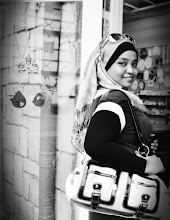The interpretation tool, marketing and promotion workshop was held at the Penang Heritage Trust. on the first session, the workshop being presented by Janet who is one of the Anak-Anak Kota Organization Members.
On that specific day, we have learnt into three sections. Which are:
Introduction to interpretation tools.
Introduction to promotion and marketing strategies.
Working with your site resource and constrain.
Figure 1: Janet gave the talk
The reasons of doing this workshop are:
To define, introduce, share and study various interpretation tools.
To define and study marketing and promotion strategies in relation to Cultural heritage products or site.
To brain storm and overcome issue of the site limitation and constraints.
I was real surprised when the detailed being discuss are actually as the same as Pn Nazlina mention when to create a good web site. They are as below.
The first session begin with:
1. Know your attraction:
What one organization or people who have the cultural heritage products or site must compile their inventories of what are the site or products offers for visitors or tourist.
One also must know their knowledge from person, library, where is the sources or method used.
They need also to determine whether their site is historical, natural or cultural site. This is to ensure they are in the right tract of making further planning marketing and promotion.
Then they need to ensure their site have to contain the living experience around. Which mean they are people who leave and there in the site.
2. Conduct a market research:
While conducting the research, the things should you bare in your mind would be:
What primary reason tourist come to our site or used and buys our products?
3. Know your market:
Know who the tourists are. Their age, race, and preference will determine what they want from our sites either just to have a look or appreciate the site and products.
Besides, we must look the significance in the sites offers is it related to materials shown?
The key value and integrity must be retained.
ISSUE:
Penang Islamic Museum. While we enter into the museum, the feeling and surrounding are so cold. I mean the message that the museum try to deliver to the visitors did not reach to the level of satisfaction. For those Malay who familiar with the things shown will understand. How for those who is Caucasian, Chinese and Indian will not be able to understand well.
The Quran shows in the glass showcase. For those who were not Malay and Muslim, they would like to know where the Al Quran is being recited. They would like to see that kind of living heritage. Even the Quran it is not good to be put on the floor, how ever photo of people recite Quran using “rehal” or Quran holder can be shown.
The interpretation must be good to ensure visitors feels like they in those era and they can feel it without just read the interpretation.
Remember: Focus on customer needs and interest.
Figure 2: Everyone is giving great attention. The view was not good since I have to sit at the back.
What is interpretation?
"Interpretation is a communication process, designed to reveal meanings and relationships of our cultural and natural heritage, through involvement with objects, artefacts, landscapes and sites." (Interpretation Canada)
Why interpret site?
Why interpret site?
In some cases where a heritage site is big enough or well known enough, it might not require as much interpretive effort to attract visitors – people will want to see it or experience it because of other benefits the site provides. Interpretation is a "value added" benefit to the total site visit. (Scotland Interpretation Seminar, Oct 2000).
But for most moderate to small heritage sites, providing outstanding interpretive programs and services, and having a good interpretive plan will be required for their long-term tourism success. (Scotland Interpretation Seminar, Oct 2000).
Example:
If we used curry leave, then we need to interpret. Why we used it, how it help in medical purpose, where it is from and so on. The best if you can relate your interpretation with the visitor’s daily life. This will help them remember last and create some interesting to be heard.
What is static interpretation?
Signpost, plague, description on site, photographic collection and newspaper cutting.
Provoke
Relate
Reveal Address the Whole
Strive for Message Unity.
Do remember, the memories of giving interpretation will last by:
90% what they do
50% what they see
30% what they read
10% what they heard
Then we break for a while to have some drink and food. Basically the food is good that day. Fried noodles and a pack of pastries. Later we start with our second session of that workshop.



No comments:
Post a Comment